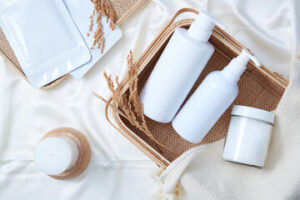Product Photography is one of your arsenal’s most important marketing tools. Studies show people process images 13 milliseconds faster than text, and they are often their first impression of your brand.
When you hire a professional product photographer, it’s important to have a checklist, style guide, and publication calendar. This will help ensure you’re delivering consistent and high-quality photos for your e-commerce website, digital ads, and social media channels.
Product photography is the wheels of an e-commerce site, but it’s crucial to take the time to set up the right space to get the best results. It should be a designated area free of distractions like kids or pets and other elements like breezes that could change the position of shadows in your images.
Contextual shots can help a customer make a buying decision by showing how they would use your product in their everyday life, such as homewares in a living room or camping equipment in the outdoors. They also allow shoppers to connect with your product on an emotional level, evoking the ‘looks like’ and ‘feels like’ criteria they use to judge products in physical stores.
When used correctly, contextual images can be a powerful tool in creating a trusting online shopping experience for your customers. However, it’s important to remember that your photos should be realistic, not overly stylized, or you might risk turning customers off.
Another popular product photography technique is the flat lay shot, which is a simple and minimalist image that displays your product on a neutral background. The flat lay approach is particularly effective for highlighting textures, as well as using props to add context and tell a story. If you want to create a more unique and striking flat lay photo, try playing with different angles. For example, angling the image slightly down or putting your product in an odd number of rows can add tension and interest to your compositions.
Flat Lays
Flatlays are an attractive way to showcase a product from a bird’s eye view. Specialized flat lay photography takes this approach to the next level by arranging products in creative ways that tell a visual story.
To make a flat lay image more compelling, it’s important to think about the product’s color palette and the emotions you want to invoke. For example, if your products are based on natural skincare, incorporating elements like flowers and leaves in the photograph will reinforce that message. Similarly, if you sell a line of clothing with an vintage feel, using props like old books and aged fabrics can create a more authentic feel.
When shooting a flat lay, it’s also important to keep the composition in mind. Aim for a clean, easy-to-read arrangement. Avoid overcrowding your image, as this can make it hard to focus on individual items. A good rule of thumb is to use the “rule of thirds” – imagine a noughts-and-crosses grid overlaying your shot, and position your most important objects roughly where those lines intersect.
Having plenty of props to work with will allow you to take more photos and give your flat lays more variety. However, it’s important to stockpile only the types of props that will really be necessary for your products. Otherwise, you could end up with a lot of extra material that will just sit around your studio taking up space.
Zoom-Ins
Product photography can be a lot of fun if you have the right equipment. You’ll want a camera with a high-resolution sensor and a large storage capacity to capture all of the possible angles of your products.
Choosing the right lens is also important for product photography. A macro lens is a good choice for close-up shots, but it’s also important to have a regular lens that can capture the full image as well. In addition, you’ll want to use a dedicated macro filter to minimize flare and other unwanted effects.
Other tools you’ll need for product photography include a strip softbox to light long and thin areas, and a grid to create the ideal light falloff pattern. You can also use a simple speedlight instead of a softbox for smaller products.
If you’re shooting a lot of products, it might be more efficient to shoot them in multiple groups, and then select the best ones later. This will save time and effort during the editing process.
High-quality product photos establish credibility for your ecommerce business, and they can increase conversion rates. They’ll also help you reduce the number of product returns, which cost businesses money in lost sales and customer service fees. In fact, according to a recent study, more than four-fifths of buyers say that high-quality images are highly influential when they make a purchase decision.
Packaging Shots
The right product photography shows shoppers what your product is all about and encourages them to buy. It can also help build brand confidence and credibility. High-quality product images can help support all types of Visual Marketing Content, including product descriptions, videos, blog posts, social media updates and more.
When it comes to product photography, proper packaging is just as important as the products themselves. In fact, it’s one of the biggest reasons why ecommerce brands need high-quality product photos to succeed. Whether they’re displayed on website pages, in catalogs or used for other marketing and promotional purposes, quality pack shots show off the product inside its packaging to create a professional and polished look that will boost conversions.
There are two main types of pack shots: individual and group shots. Individual shots contain only one product, while group shots showcase multiple products together. For both, it’s important to use a tripod for consistent shots that are both accurate and clear. This minimizes camera shake and allows photographers to focus on other aspects of the shoot such as lighting and props.
Typically, the front angle is a great choice for pack shots because it mirrors how shoppers would encounter the product in-store and showcases all the relevant details they require. However, if the product is particularly unique, it may be beneficial to experiment with other angles as well.
Close-Ups
Close-up shots are used in product photography to highlight small intricacies in the item being photographed. They are especially useful in jewelry product photography, but also for items such as antiques and vintage goods. This type of shot is particularly popular among ecommerce retailers, as it allows customers to understand the condition of the item before purchase and reduces returns.
Unlike some types of photography, where specialized equipment is necessary to get the best results, compelling product photos can be produced with the same kind of camera most people already own. However, a few basic tools are necessary, such as a tripod to keep the camera steady when shooting, black and white backdrops, spray cans of compressed air for cleaning off dust and messes, hot glue and Plexi rods for displaying floating objects, and c-stands with grip arms to help with rigging the scene.
Another important tool is a softbox, specifically one of the strip variety. These are ideal for lighting long and thin objects, as they can be placed at a specific angle to create an ideal light falloff pattern around the subject. They are also great for managing reflections, which are the most difficult aspect of any product photo. Be sure to use manual focus when working with a softbox, as autofocus can often be inaccurate. You may also want to consider using your camera’s focus peaking feature, which highlights the area in the frame that is in the sharpest focus.
Group Shots
Often used in product kits and collections, group shots display multiple products in the same frame. This allows shoppers to visualize how they might use each item together and increases average order value (AOV).
With group shots, it’s important to pay close attention to lighting, arrangement, and background. The lighting needs to be just right to make the product stand out, and arranging the items within the frame should be simple yet visually appealing. The background should also complement the products without distracting them from them.
While it’s important to have different types of product photos, it’s equally important to be consistent with your brand imagery. If your flat lay product photography all uses the same props, for example, then be sure that the props are the same each time to ensure consistency in your images. This will also save you time during post-production and reduce the chances of any inconsistencies in your final images.
The best product photography uses a range of tools and techniques. However, the type of equipment you need depends on how your photos will be used. A good quality camera with a tripod is the foundation, but you may need a wider lens to capture the most compelling angles or more sophisticated lighting for the aspirational and lifestyle shots. You can also invest in a studio lighting kit that includes softboxes and light tents to create the perfect conditions for your product shots.
